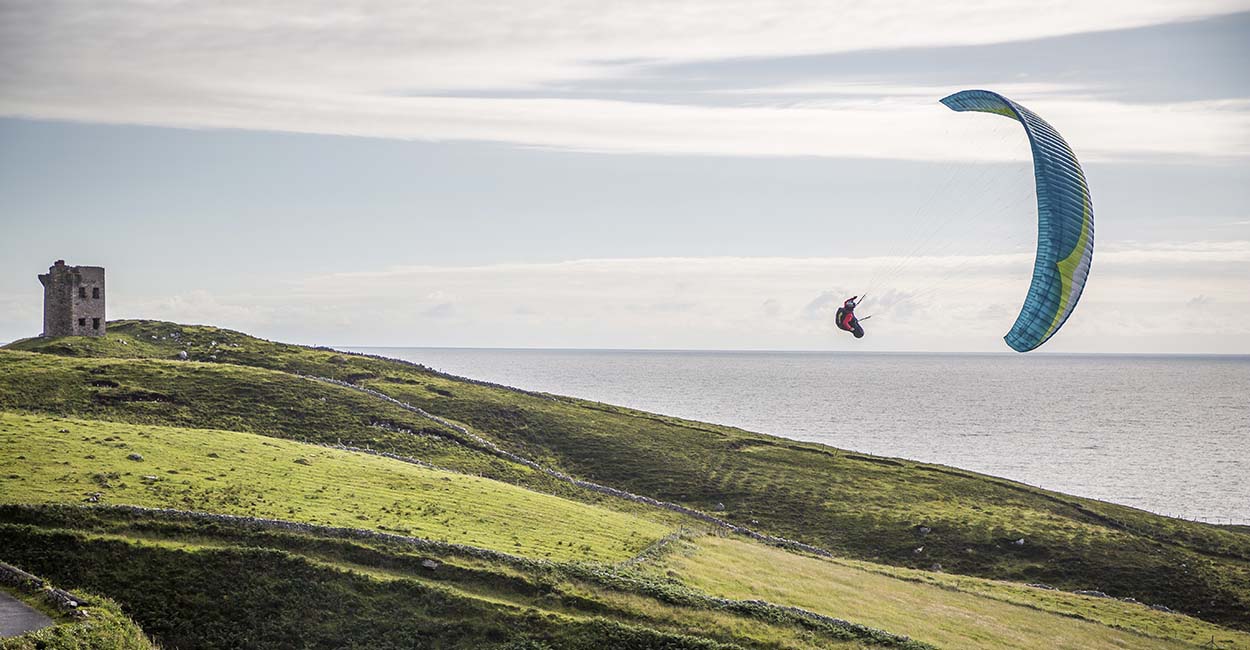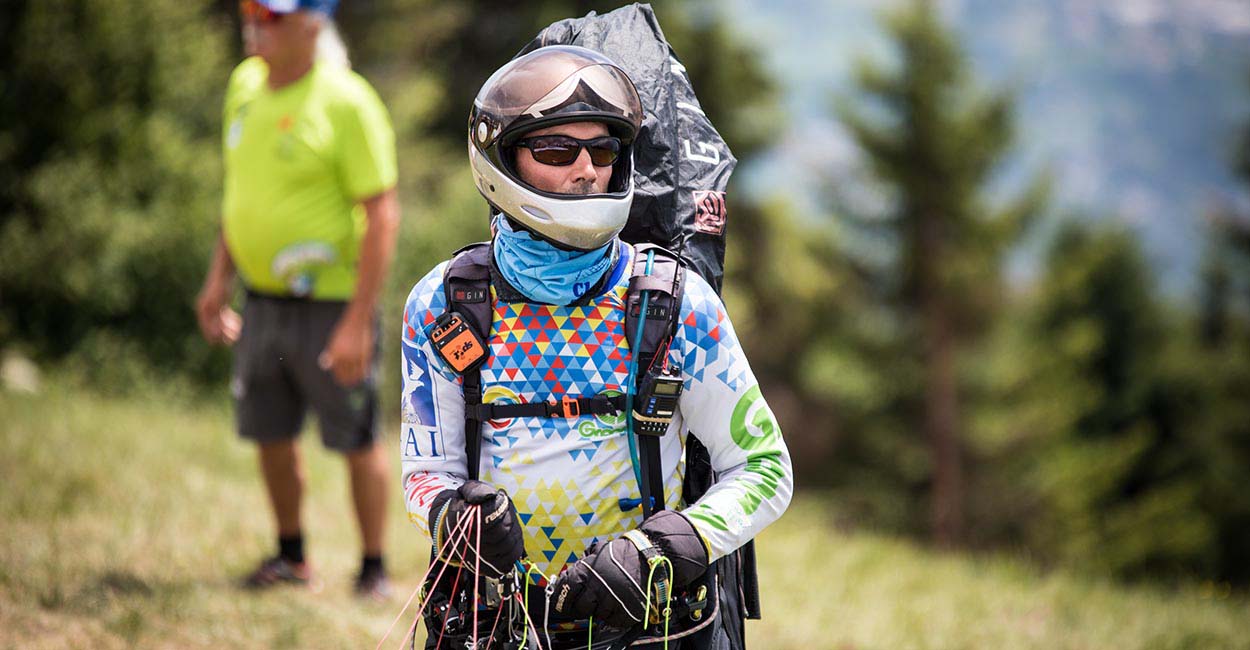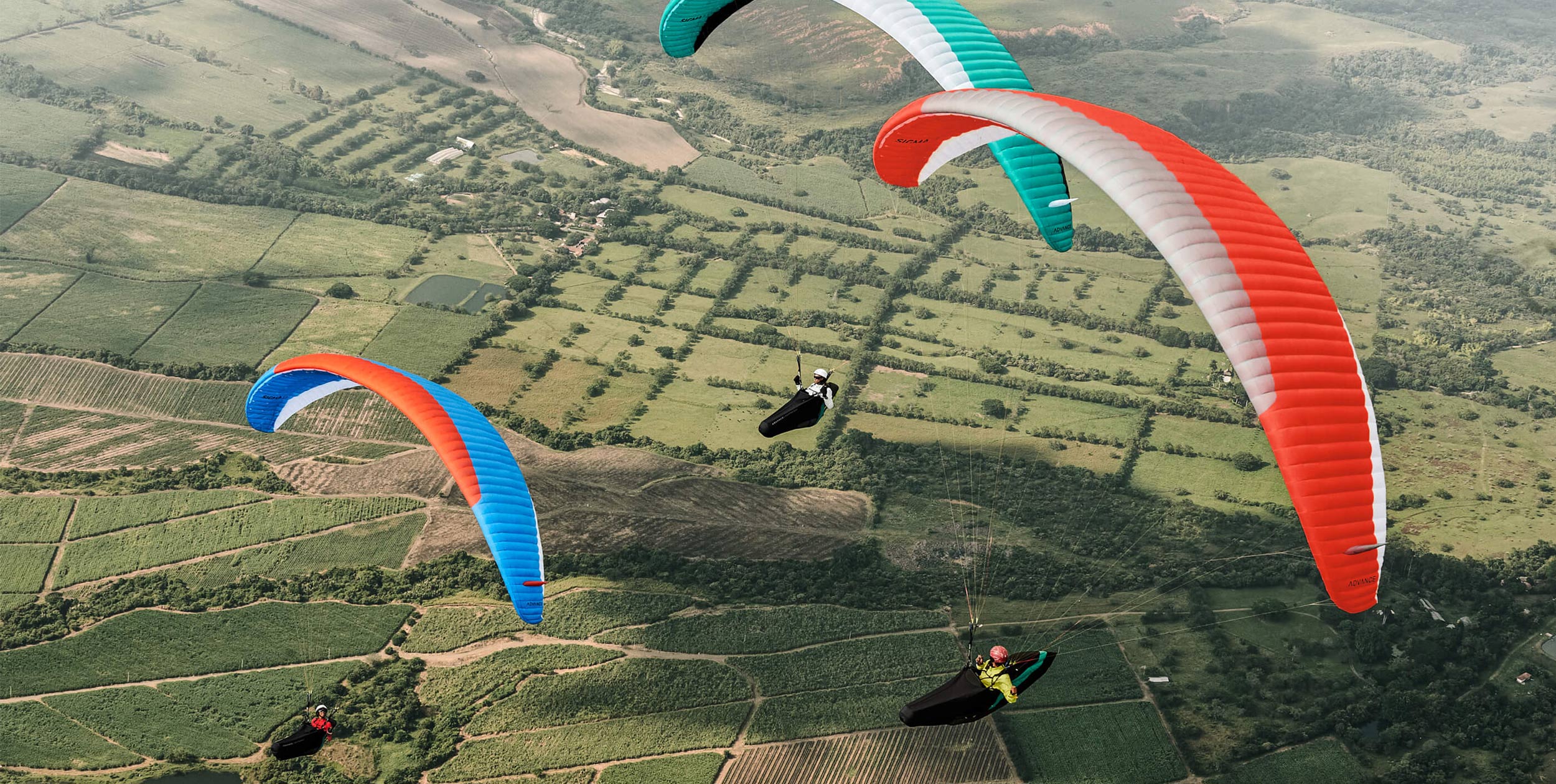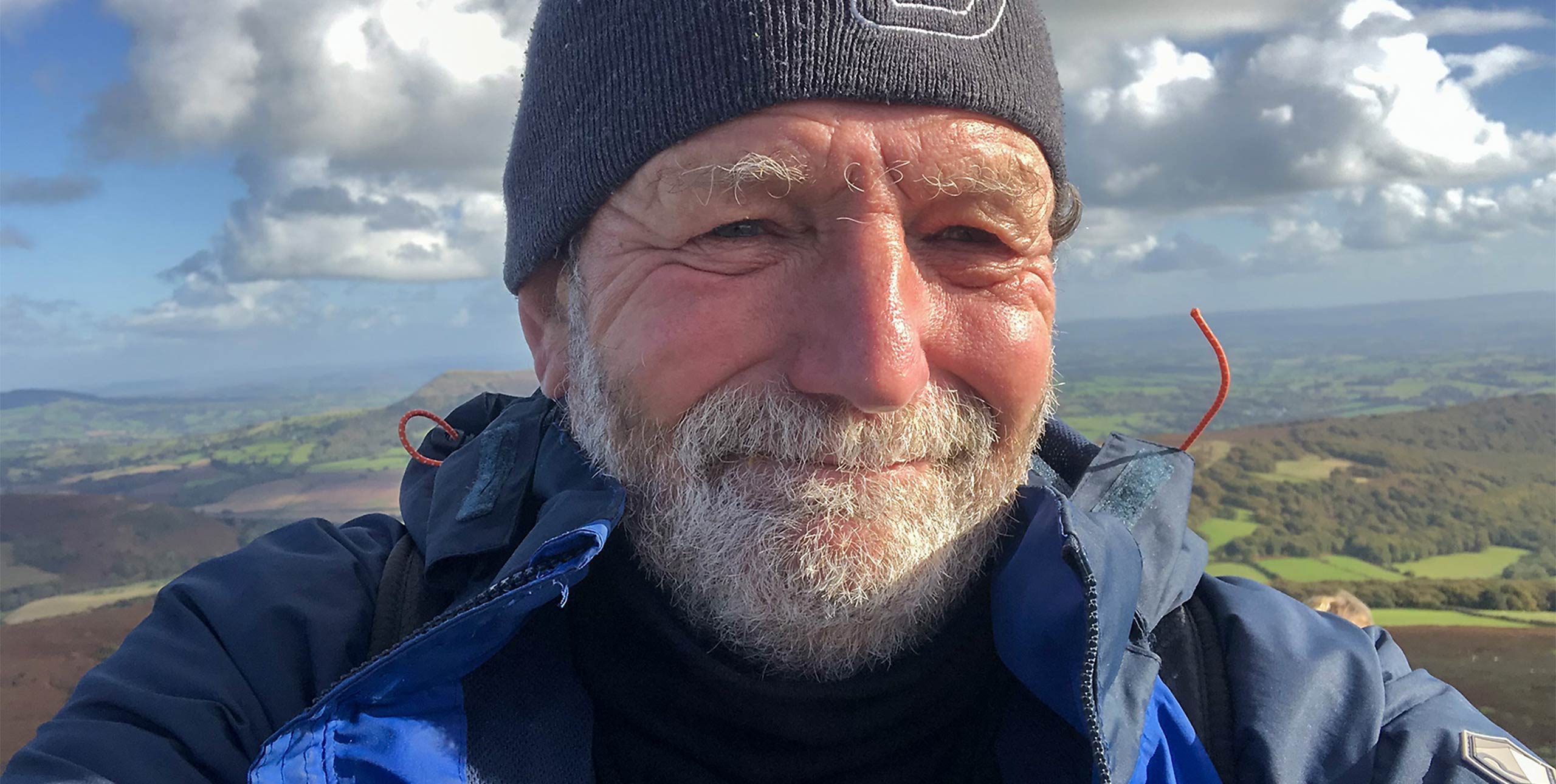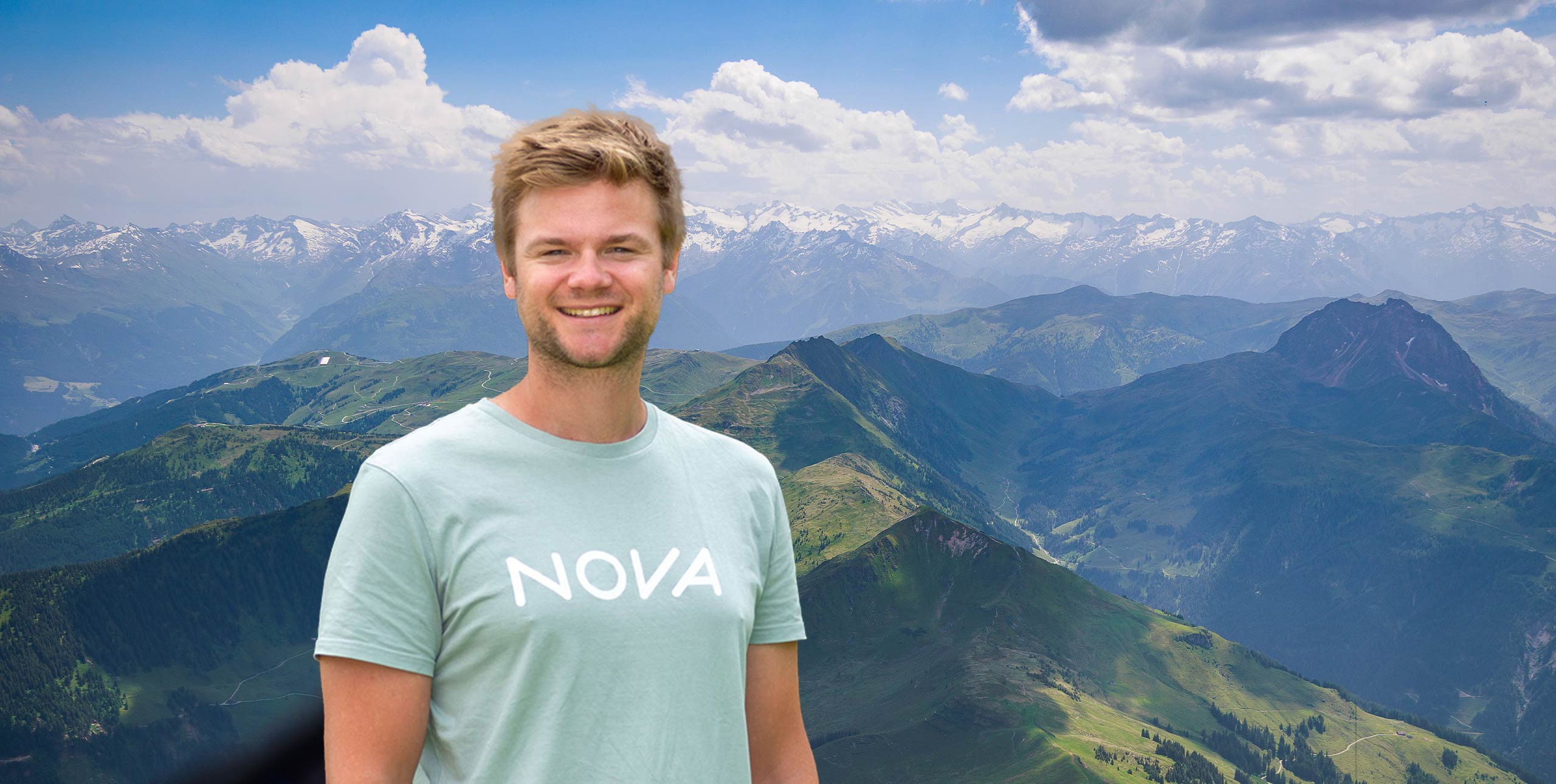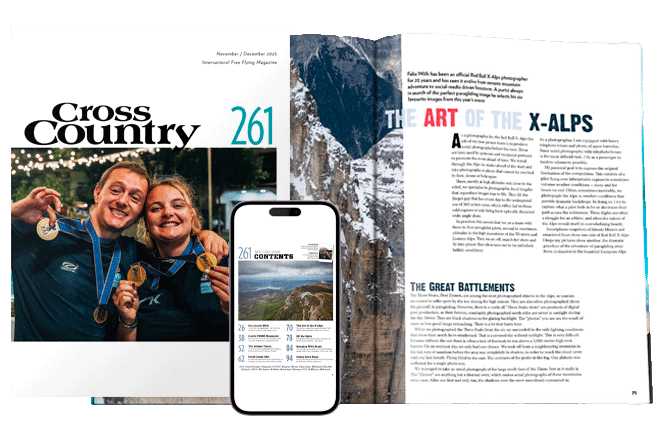
By Hugh Miller
Five pm. An inky black sky seeps through the wooden slats of the blinds, pressing in against the living room walls. The world outside is a howling madness of low pressure systems being flung relentlessly across the Atlantic; furious westerly winds blast my house’s brickwork and rain pellets penetrate the cracked paint. Summer seems long gone. The only tiny reminders of the flying season are the antics of the seagulls that soar the hurricane winds as I walk home from work. Before dusk, they streak across the apartment blocks, tight white bodies with hunched wings that barrel about the sky, revelling in its mad energy…
It’s a far cry from the summer of 2004, which has to go down as one of the best seasons ever for the UK’s small crew of XC pilots. Cold fronts continued to sweep in, coating the country with dry, cold airmasses that – with a little help from a building ridge of high pressure – kept the promise of huge distances alive.
It was to be the year that Steve Ham’s UK paragliding distance record of 175 km would finally fall. Steve’s record had stood untested for nine long years, and was fast in danger of being perceived as an immortal, untouchable achievement, such was its near-mythical status among pilots. But then in June, Nigel Prior launched from Bradwell Edge, crossed the Midlands and continued into Cambridgeshire, setting a new British record of 186 km. His flight track mirrored that of Richard Carter and Matt Cook, who flew the first 160+km flights from the same Derbyshire site ten years ago. But Nigel’s record was short-lived. Three weeks later Kai Coleman stepped it up further, launching from the Long Mynd to raise the bar to an incredible 190.8 km.
All in all, 29 flights of over 100 km in distance were logged by pilots competing in the UK’s XC League, and common consensus is there were at least fifteen truly exceptional XC days. Although not logged in such concrete figures, it is also safe to say that this summer more pilots’ relationships broke down and more jobs were lost than in any other year, as flyers sacrificed whatever it took to be on the right hill at the right time.
This is a story about two such days toward the end of the season. It’s an unashamed, hand-on-heart tribute to British cross-country flying, and if it reflects a little of what makes flying in England (yes England! Tea, chips, grim weather – the one and same!) so special then that’s great.
7th AUGUST
Something’s not quite right. It’s 6:30 am and I’m picking up Jérôme Maupoint from London’s Gatwick airport – and he’s got his glider and cameras with him. People don’t come to the British Isles for flying trips, let alone legendary lensmen who require a very particular mix of blue skies, light winds and consistent flying sites in order to ply their trade. Nevertheless, as scores of British pilots flock across the English channel for their summer flying fixes in the French Alps, Jérôme Maupoint is indeed bundling his bag into the boot of my car and we’re setting off round the M25, destination Wiltshire. Jérôme adjusts his spectacles, examines the astonishingly clear skies, and passes a quizzical look across at me. ‘Eh, Hugh, you are sure this is England?’
We cane it down to arrive at Marborough by 10:00, the first cu’s puffing tentatively into the endless blue above us before dissipating under the heat of the sun. We’re due to meet Jim Mallinson at Milk Hill, a 300ft-high bowl facing south west. Jim is his usual relaxed and refined self, a picture of calm in contrast to Jérôme and my own manic excitement at the promise of today.
Bags out, boots on, squash in sandwiches, tie laces, jump fence, run up hill, throw out glider, check wind, feel sweat drip down my back under the suffocation of my jacket, take off jacket, breeze tickles the glider’s leading edge open, pull risers, turn, negotiate thistles, jump cow pat, thud thud thud, lean back … and I’m airborne, scratching along to the white horse so Jérôme can snap us over the chalk mystery, flying through lumps of temptation, waiting for a bubble to come and pick us out of this tiny ridge on the English countryside.
Out west a swathe of stratus is crawling towards us. The cold air pushing in under it triggers a change – the sun’s warmth on the slope is that much warmer than the air out west that suddenly it bursts into life and we’re booted up 1000ft over the hill. Things go quiet again, then we find a small thermal, and start our slow circle around our quarry, trying to pin down the core, like we’re trying to fit an ill-fitting key in a lock, tweaking it gently, using patience not force, our gliders slicing past each other like knives as we 360. The lift’s so weak I can hear the creak of my harness, the beep of Jim’s vario, the subtle shifts in wind noise as the lift changes… all the time willing the thermic equivalent of a cartoon-style jet of oil to spring up from beneath and ping us skywards….
I remember – I always do, don’t know why – a line of advice etched in my mind from a technique article Patrick Laverty wrote back in Skywings magazine in 1989 – ‘If it’s a two-up, stick with it and cut your anchor with the hill’. Flatland flying in the UK is all about ‘getting away’ – clearing that mental attachment you have with the ridge, and putting your full faith in the snotty, weak-as-shit thermal you’ve committed to as you drift downwind.
It takes 30 minutes of delicate and determined flying before we’re finally up among the curtains of cloudbase. The sky opens up downwind: a simple reward for the work invested in climbing. Below us, the Marlborough downs extend out to the east, and Marlborough and Savernake forest beckon downwind. The air is as clear as a bell.
Conditions slowly improve. 30km out a squadron of sailplanes whistles past, all white sunhats, waves and civilised smiles. Cloudbase has risen as we’ve ridden a tight corridor between the blanket of cloud encroaching in from the south-west and the open blue out to the east.
50 kilometres later, and we’re out somewhere over Oxfordshire at 5,500ft, trailing a blaze across the flatlands. The green pastures of Wiltshire have turned to the yellows and browns of yet-to-be-harvested crop fields and the sky’s energy has progressively improved, from Governador-style weak stuff through to Piedrahita-strengthed rockets that have seen us pinning out our bars and yahooing all the way to the next climb.
Just as I’m settling into the boom-and-zoom routine of climbing and gliding, we reach the end of the active sky. Mid-glide, Jérôme pulls alongside. He calls out, ‘eh Hugh, time for the pub, no?’
Good lord – the Frenchman had been in England all of eight hours, had witnessed the best XC conditions England ever experiences, and thinks he can just choose to land whenever and wherever he wants? As it happens, my arms are burnt pink and we don’t encounter another blip of lift. Minutes later, we’re back in the summer heat, overgrown grass up to our knees, our ears ringing from the pressure change, manic grins spread across our faces. I’m ecstatic, not just from the adrenaline coursing through my veins – but also from the pleasure of sharing one of the best days my home country has yet offered to me with Jérôme, a friend who’s lucky enough to call the alpine paradise of Annecy home. After lots of back-slapping we ball up our gliders and stumble to the road.
‘What’s a paraglider then, that’s like a sawn-off parachute, innit?’ A community bus chugs around the corner and rescues us from an afternoon of hitch-hiking. As Jocky Sanderson says, landing after an XC is like being dropped deep behind enemy lines… and the day takes on a whole new dimension as you embark on the adventure of getting home. The driver’s innocent bank-robber/aviation analogy has us in stitches, and we do the rounds of hospitals and community centres before finally getting dropped off at Newbury train station. We eventually arrive back at the car, still buzzing and in disbelief. As the sun casts a glow over the wheatfields we drive to Jim’s house for the night.
8th AUGUST
Jim lives with his wife Claudia in rustic tranquillity in a beautiful old farmhouse, Rawlings Farm. Outside, a garden table and bench sit green and warped in the grass, and vegetables grow in tilled soil. Piles of books, threadbare cushions, statues of buddha and Indian ornaments soften the corners of rooms, and the fragrance of cumin and coriander permeates the air, a residue from the curries that are cooked nightly for visiting friends. The sun is blazing this morning, and we all pile down to the river to swim and allow the cold water to shock the stony fug of last night’s drinking from our minds. It’s another stunning-looking day, but the wind’s looking light.
At noon we set off back to the hill, still feeling smug inside from yesterday’s success. When we arrive we find five pilots sat in stifling heat. Small hills and nil wind is always a frustrating combination. At 200ft, you’d be lucky to get a 15-second ride before hitting the cornfields below, and the hill is less an access point into the sky, rather a small ramp to help the thermic bubbles release. But the sky is looking truly epic – white cu’s are polarised against a deep blue sky, stretched tantalisingly to the horizon.
A few sweaty walks later and yesterday is well and truly forgotten. Even a 500ft climb above the ridge would work for us now. It’s a case of hunting up and down the ridge for any small hook that might lift us above the hill-top, and then hoping that the bubble might build over the ground behind take-off.
Adrian Thomas finds something, and Jérôme and I latch on tightly. We rotate skywards like a three-blade propeller. It’s a five-up. At 3,000ft, Jérôme breaks away, lowers his camera, and starts flying offset spirals, bleeding off precious altitude as he presses his shutter release. I wonder what Adrian, one of the UK’s most efficient and skilled XC pilots, must think he’s up to. He hitches a lift back up with Jim, who’s found himself a climb, and soon we’re back together and gliding north towards Avebury stone circle.
Usually, British XC flying involves a generous tailwind that allows you to drift downwind, each 360 helping you make distance. Today is different. There’s almost no tailwind, and we’re working for every inch of distance. RAF Lyneham looms, and with it the challenge of negotiating its airspace. We stay high above its MATZ, and concentrate on maintaining altitude until we reach Swindon, then it’s game-on again. Over the next four hours I lose myself in thought as we push slowly north-west. For me, the challenge of XC flying lies as much in controlling wildly shifting emotional states as it does making good tactical decisions or keeping alert to changing conditions.
At times you’re clinging onto a low save, a rock climber mid-move, dusty fingers slipping on a shallowly angled hand hold, the end of your flight perilously close, while your friends circle effortlessly miles above you. The transactional bustle of modern life – computer traumas, is-he-going-to-stiff-me paranoias, all this is left behind as the mind sharpens its focus around the task at hand: staying in the sky.
Then there are those utterly blissful moments when things go way better than you’d ever imagine. You’ve reached base perhaps, and can’t resist scooting to its side, and find a gentle 2-up that feels rougher than it actually is, because the cloud is pitching all around you, and you’re feeling slightly motion-sick. Soon you’re a couple of hundred feet up its side, gripped by a mix of paranoia and elation. The cloud has turned into a Jekyll and Hyde character. At times it’s an innocuous, white, fluffy playfriend, then suddenly it switches, sending cold rushes of panic up your spine as it swallows you in fear, cloaking you in its suffocating grey fog, leaving you groping for light and hope. As the greys subside and the mist clears, you can look back at the Brocken Spectre rainbow shadow behind you and you’re filled with such a feeling, so utterly alive it leaves you shouting with joy. As you pierce out into the blue, the cloud around you is like dry ice in a nightclub, your sensation of movement wildly accelerated by its proximity: ground-rush at 5,000 ft.
Then there are times when you blast off at cloudbase, stomping on the bar, embarking with absolute certainty for that juicy cu over that hill downwind, almost hearing your vario’s squeals before you reach it, a smug grin spreading over your face as you anticipate your utter control over your destiny.
There’s the horror of arriving under the cloud and finding nothing but zeros – pushing on under its shadow with rising dread, like a cat venturing out into the garden at night, cautious of what lurks beyond. You bite your tongue, summon your inner-will, and push deeper, and deeper, and still the jackpot eludes you…all the while casting one eye back at your friend who’s just started to 360 off to your left… but is it good enough?
At other times you’re like a dandelion blowing in the wind, sitting back, absorbed by the swirling toyscape beneath you, zoned out of anything purposeful, just drifting seemingly unseen over towns, rivers, meadows and motorways, wondering, ‘I wonder what life would be like down there, right now?’ as if you’ve never actually lived down there, until some stimulus – a rustle of glider fabric, a piece of straw or plastic blowing up past you – pulls your mind’s attention back to the present.
After 115 km, the magic finally ends. Our flight has taken us over some of the most picturesque villages in the Cotswolds, across the sprawling estates of Gloucester, over pilots soaring the Malverns, and allowed us a peek at the rolling wilds of Wales that lie beyond. We set out on final glide to land in Tenbury Wells, and land with the satisfaction of knowing that the fuel we have just harvested will last us long through the winter nights to come…
STONES, CIRCLES AND SPECTRES…
Silbury Hill
At 40 metres, Silbury hill is the tallest prehistoric man-made structure in Europe. Built some time around 2,000 BC, it was originally completely white, until grass took root in the chalk with which it was covered. It was long thought to be a burial mound but excavations have found nothing inside and the commonly accepted opinion now is that it represents the mother goddess. When the surrounding fields flood, the water makes the shape of a pregnant woman’s belly, with the hill itself as her womb. For pilots on cross-country flights from Oliver’s Castle or the Milk massif it is a make-or-break destination: it lies low in the Kennet river valley but just beyond it to the north-east the ground starts to rise again, triggering abundant thermals. If you can’t reach the high ground you can always soar it. Don’t land on the top ‘though – it recently caved in! – Jim Mallinson
Avebury stone circle
Just a kilometre or so north of Silbury is the epicentre of all the ancient sites of southern England. Avebury is the world’s biggest stone circle and used to be an important pilgrimage centre. For us aerial pilgrims, it is an obvious landmark, the huge ditch around its perimeter making an enormous circle. It’s also a regular landing site: it marks the edge of RAF Lyneham’s controlled airspace and if you’re not confident of maintaining the 3,500 feet you need to go over it, you’ve got to land. It’s not such a bad place to go down though. You can wander around the stones before repairing to the Red Lion for a pint and some crazy conversations with the curious characters that throng the place.
Crop circles
The Marlborough Downs are the world’s crop circle capital. The phenomenon kicked off in the eighties and ever since then several have appeared every year. They have become increasingly intricate and some of the designs are undeniably beautiful. Their origins are much debated. Aliens? Cosmic energy vortices? Landscape artists? Old blokes with a plank and a bit of string? Whatever the answer may be, they arouse a lot of interest and ‘croppies’ come from all over the world to check them out. For the pilot, they add to the beauty of late summer flying and let you land in crop fields without pissing off the farmer!
Brocken Spectres
As you fly above a cloud, you look back down and see a ghostly pilot shadowing you, its outside edges sheathed in shimmering rings. This apparition is known as a ‘Brocken Spectre’, so named because of its sightings among climbers on the Brocken, the highest peak of Germany’s Harz mountains. The Brocken Spectre – also known as an Aerial Glory – appears when you fly between the sun and mist or cloud. The glow and rings are of course a glory centered directly opposite the sun at the antisolar point. The ghostly figure is no more than a shadow of you and your glider projected forward. All shadows converge towards the antisolar point where the glory also shines.
Flying in Wiltshire
Wiltshire is dotted with great places to fly and it’s almost as if the ancient residents have marked them out for us. Just about every flying site has an ancient hillfort on the top. There are nine white horses carved into the chalk on the hillsides and, curiously, almost every one is not only flyable but faces north-west, the best wind direction for a thermic airmass. At the western edge of Salisbury plain is the Westbury white horse, where generations of hang glider and paraglider pilots have learnt to thermal. To fly cross country you have to push into wind to get around the military danger zone. HGs manage this regularly, PGs less often, but both have made it to the south coast, the PG site record being 80km, while HGs have reached Brighton, 160+ km away. To the north are the Marlborough Downs, where there are sites for almost every wind direction, but landowners can be tricky about giving permission and the controlled airspace of RAF Lyneham is never far away.


